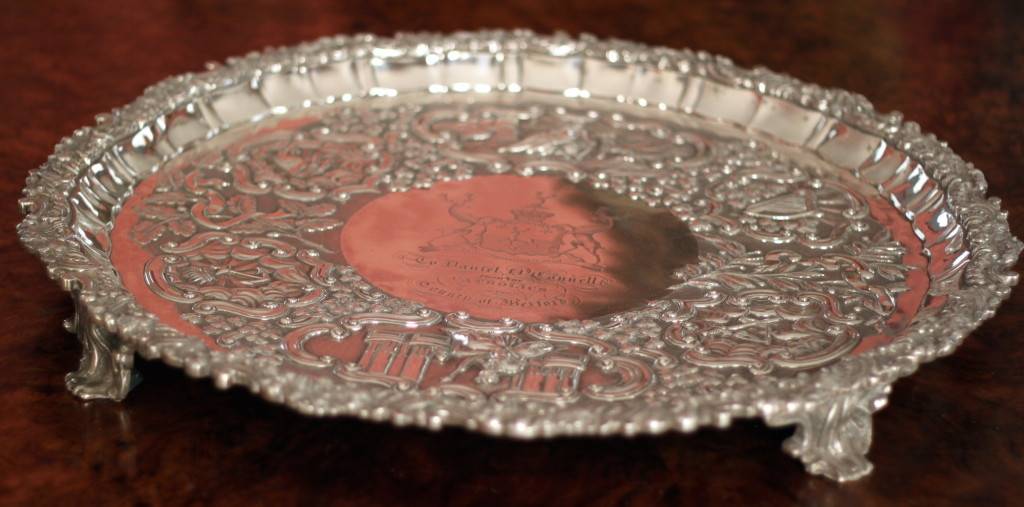Collection
Derrynane House is home to a collection of items relating to the life of Daniel O’Connell.
Some highlights are presented here. The full collection can be viewed by visiting the house. All images are copyrighted to the Office of Public Works.
Triumphal Chariot
Daniel O’Connell was presented with this chariot, or car, by the citizens of Dublin in 1844. It was inspired by the ceremonial chariots of ancient Rome which carried conquering heroes in triumphal processions. It was constructed for his victorious journey through the city following his release from Richmond Penitentiary that year. Three years later the empty chariot led O’Connell’s funeral cortege to his burial in Glasnevin Cemetery in Dublin.
By 1991 the chariot was in a very poor state. Although it had been refurbished in 1929 for the centenary of Catholic Emancipation all the original fabrics, paintings and many of the mouldings were lost. Using the surviving evidence the National Museum, in co-operation with the Office of Public Works, restored it to its original appearance for display here in Derrynane.
On loan from the National Museum of Ireland.

Silver Epergne or Centre Piece
This epergne was a centrepiece for a dining table and would have held fruit, candles, or flowers. It was presented to O’Connell in 1833 ‘by the working classes resident in London, natives of Great Britain and Ireland and of the European and American continents as a token of their esteem and admiration for his splendid and successful exertion in the cause of civil and religious liberty.’
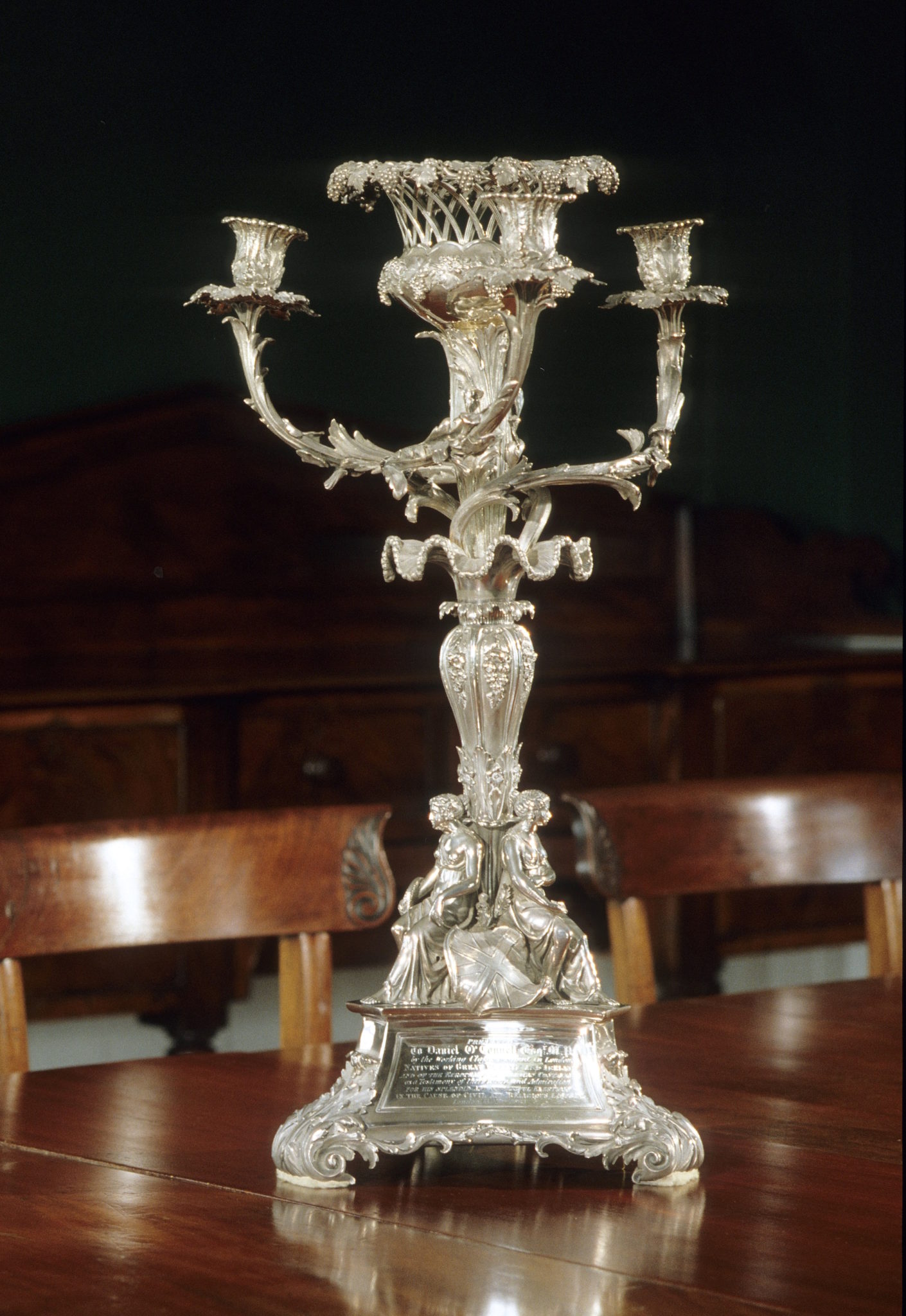
Silver Cup presented to Daniel O’Connell by St Bridget’s Orphan Charity, 1831
This cup bears the inscription A Token of Gratitude from the Committee of the St Bridget’s Orphan Charity, or Lyons School. To their President Daniel O’Connell Esq. M.P., January 1831.
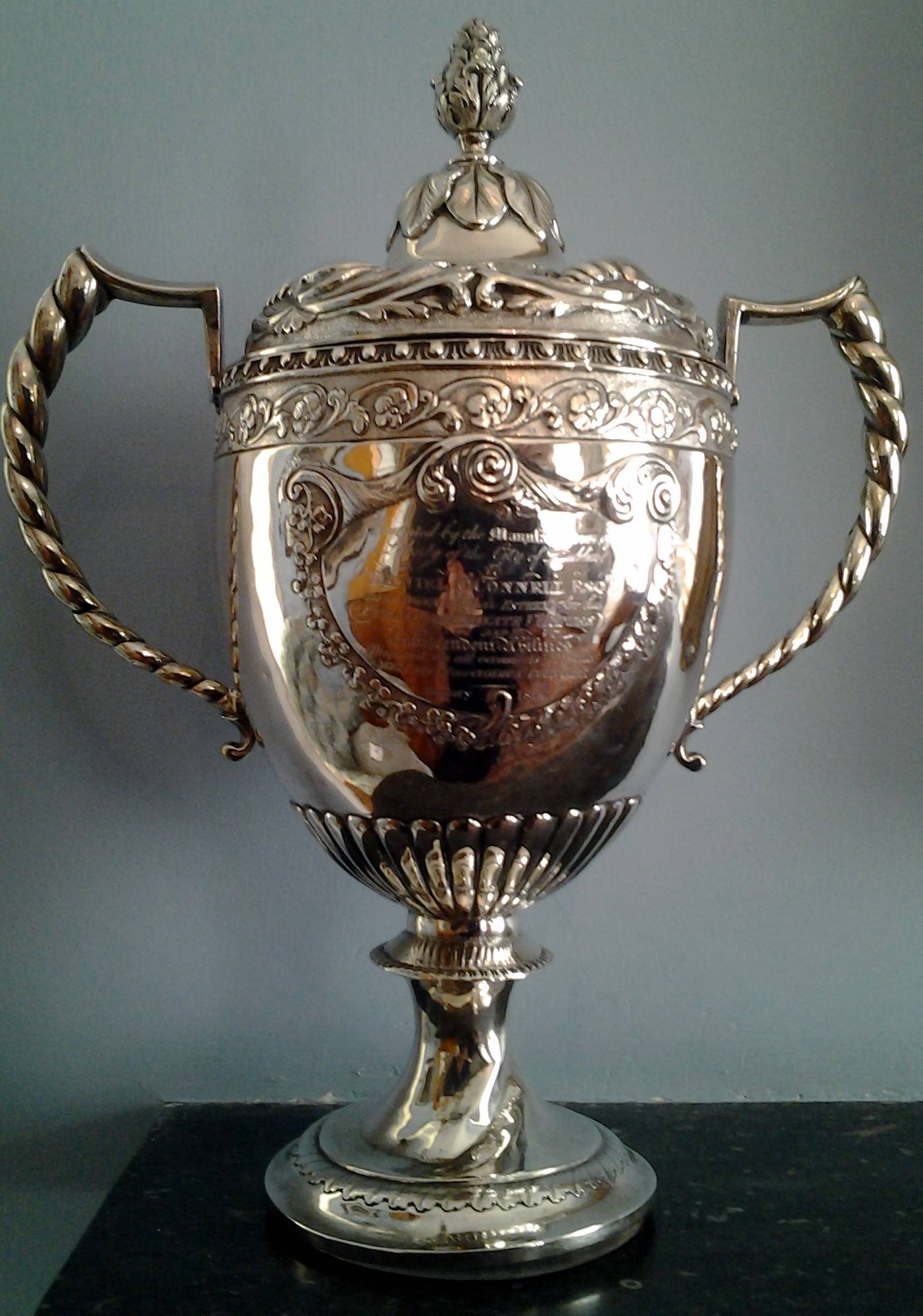
Silver Service presented by the Catholic Board
In December 1813 the Catholic Board voted to present O’Connell with silver plate to the value of one thousand guineas. They wished to show their support for him following his controversial defence of the newspaper owner, John Magee, against a charge of libelling the Lord Lieutenant. O’Connell used the trial as an opportunity to attack the British administration in Ireland.

This is said to have been Daniel O’Connell’s own carriage clock. It was made by James McCabe of the Royal Exchange in London.
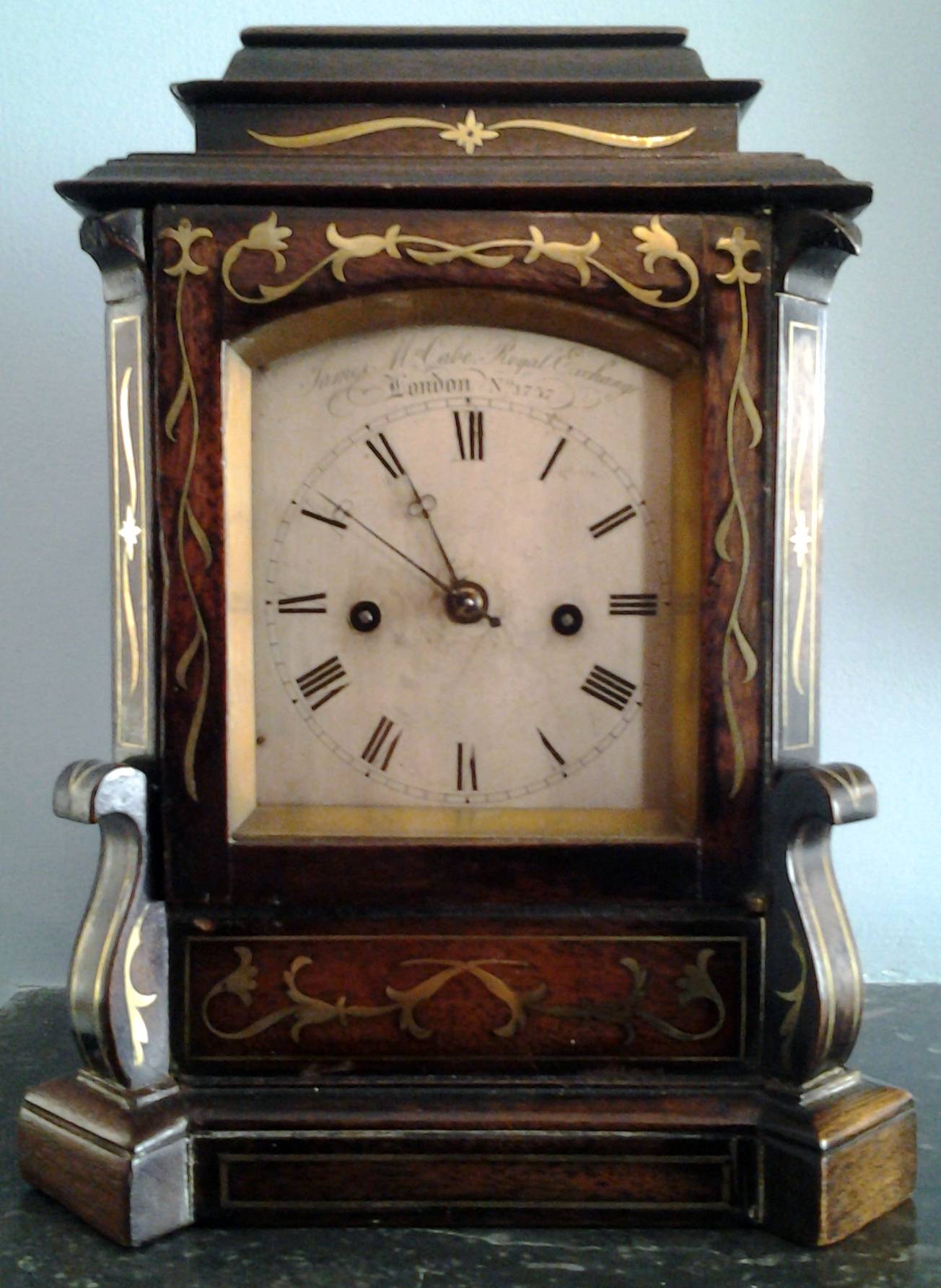
Daniel O’Connell’s State Chair and Footstool
This state chair and footstool were presented to O’Connell in August 1844 while he was a prisoner in Richmond Penitentiary to mark his 69th birthday. It was produced by Patrick Beakey, a furniture manufacturer on Stafford St, Dublin. The carving was done by a craftsman named Gaussen and the tapestry work was by his sister. The chair and stool were carved from the same oak tree. Among the carvings are the stag’s head from the O’Connell family crest and the family motto, ‘Ciall agus Neart’ (‘Wisdom and Strength’). Symbols associated with Ireland can also be seen, including shamrocks, wolfhounds, round towers, and a harp. On the front rail is an image of an Irish cap or crown, similar to the one presented to O’Connell at at Monster Meeting in Mullaghmast, Co Kildare in 1843.
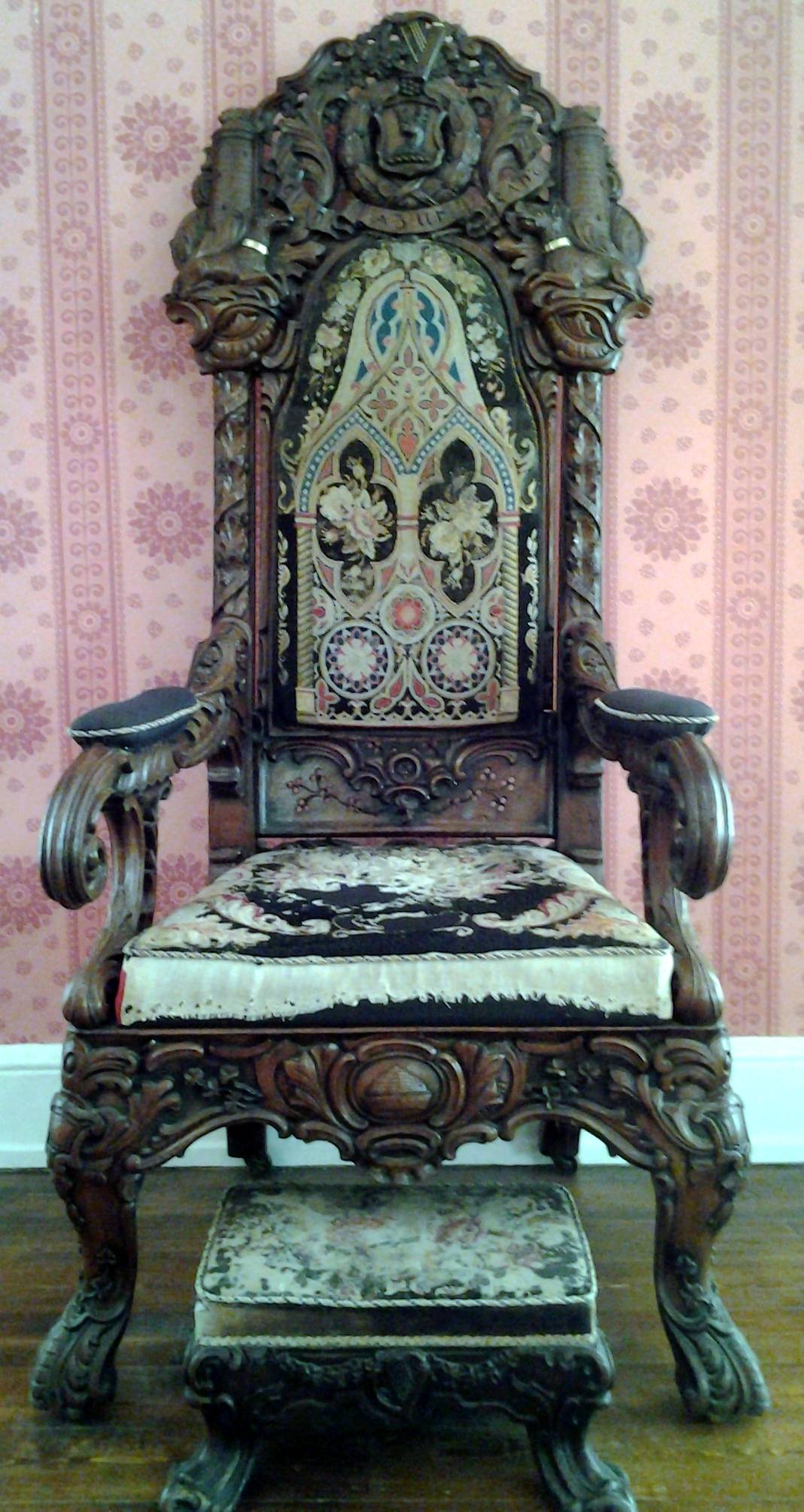
Loo Table
On 4 September 1844, while O’Connell was imprisoned in Richmond Penitentiary, he was presented with this table by the Repealers of Linen-hall Ward whom he represented on Dublin City Council. This type of table was originally designed for playing a card game called ‘loo’ and the circular top can be lifted up on a hinge to enable it to be stored away. It was made by Peter Beakey who was also responsible for the state chair and footstool. The legs were carved from a single piece of oak while the top is walnut with an oak trim. It is carved with many familiar Irish symbols such as wolfhounds, shamrocks, and harps. The central pillar is based on an Irish round tower.

The Deathbed of Daniel O’Connell
Daniel O’Connell died in this bed in the Hotel Feder, Genoa at thirty-seven minutes past nine on 15 May 1847. His last days had been difficult but, according to his chaplain Rev. Dr Miley, O’Connell “died as an infant sinks upon his mother’s breast to sleep”. Members of the local Genoese clergy surrounded his bed, but it was Dr Miley, his faithful servant John Duggan, and his son Daniel, whom O’Connell recognised to the very end.
In 1926 the bed was transferred to the Irish Pontifical College in Rome from the villa of the Bolgarelli family in Alfaro near Genoa. In the early 1990s, the Irish College placed the bed in the care of the Office of Public Works for display in Derrynane.
Donated by the Irish Pontifical College, Rome.


